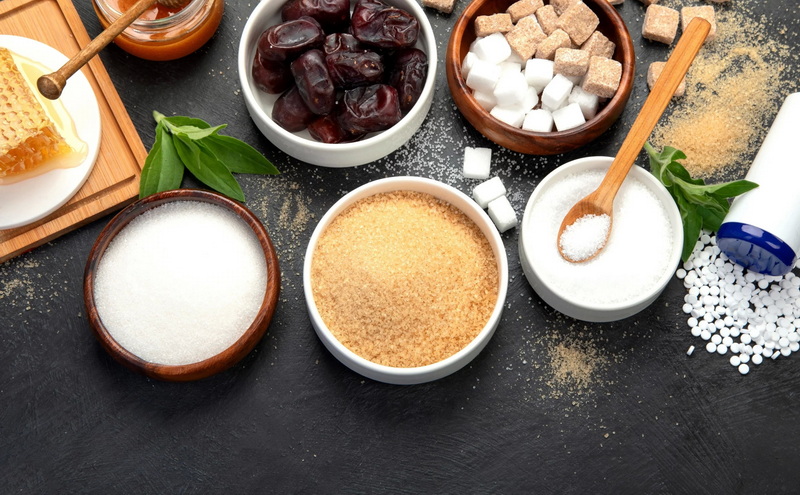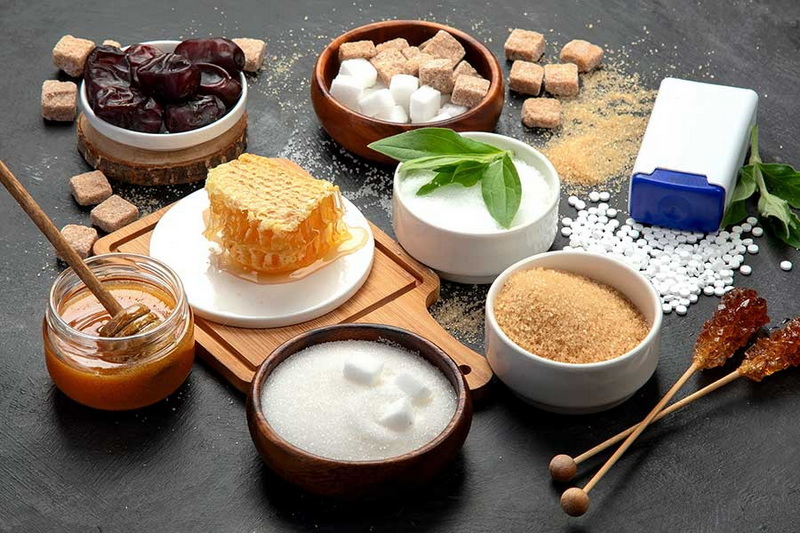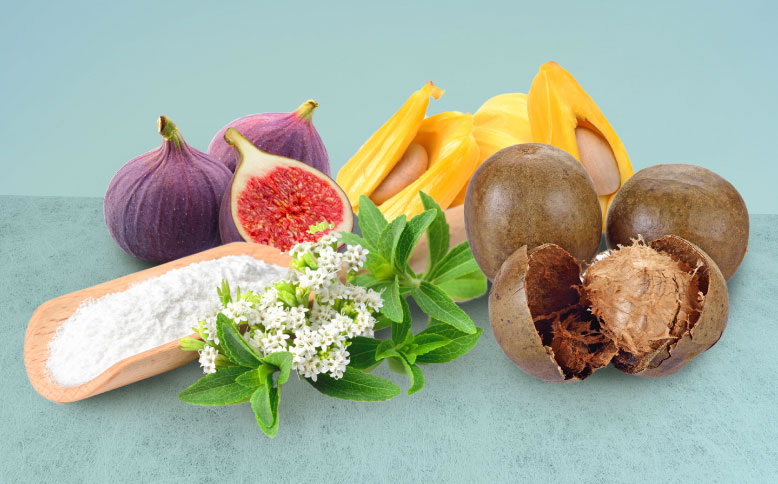Content Menu
● Introduction to Stevia and China Natural Sweeteners
● Cultivation of Stevia in China
>> Ideal Growing Conditions
>> Planting and Harvesting
>> Agricultural Practices and Mechanization
● Extraction and Processing of Stevia Sweetener
>> Leaf Drying and Grinding
>> Extraction Methods
>> Purification and Concentration
>> Drying and Final Product Formation
● Economic and Social Impact of Stevia Production in China
>> Poverty Alleviation and Rural Development
>> China as a Global Export Leader
>> Environmental Considerations
● Advances in Stevia Breeding and Research
● Quality Control and Standards
● Market Trends and Consumer Preferences
● Conclusion
● Frequently Asked Questions (FAQs)
>> 1. What makes stevia a popular natural sweetener in China?
>> 2. How is stevia cultivated in China?
>> 3. What extraction methods are used for stevia in China?
>> 4. How does stevia production benefit Chinese farmers?
>> 5. Is stevia production environmentally sustainable in China?
Stevia, a natural sweetener derived from the leaves of the Stevia rebaudiana plant, has become a popular sugar substitute worldwide due to its zero-calorie content and intense sweetness. China plays a pivotal role in the global stevia market, being the largest producer and exporter of stevia and other natural sweeteners. This article explores how stevia is produced in China, from cultivation to extraction, highlighting the technologies, agricultural practices, and economic impacts involved. It also discusses the significance of China's natural sweeteners industry in the global context.

Introduction to Stevia and China Natural Sweeteners
Stevia is a plant native to South America, specifically Paraguay and Brazil, but it has been successfully cultivated in China since the 1970s. The sweet compounds in stevia, mainly steviol glycosides such as stevioside and rebaudioside A, are 200 to 300 times sweeter than sugar yet contain virtually no calories. This makes stevia an attractive alternative for consumers seeking natural, low-calorie sweeteners.
China's stevia industry has grown rapidly, with the country now accounting for approximately 90% of the world's stevia planting area. The Chinese government and agricultural cooperatives have supported stevia cultivation as a means to boost rural incomes and promote sustainable agriculture, especially in regions like Inner Mongolia and Shandong province. The natural sweeteners produced in China are exported globally, contributing significantly to the international market.
Cultivation of Stevia in China
Ideal Growing Conditions
Stevia thrives in warm, sunny climates with well-drained soils having a pH between 6.0 and 8.0. In China, stevia is mainly grown in frost-free areas such as Shandong, Inner Mongolia, and Jiangxi provinces. The plant is sensitive to frost, so cultivation is timed to avoid cold weather. Farmers often grow stevia on flat land or raised beds, using drip or furrow irrigation to maintain optimal moisture without waterlogging, which harms the crop.
Planting and Harvesting
Stevia is propagated primarily through seedlings or cuttings, with mechanized transplanting equipment increasingly used in large farms. However, in some regions where seedlings are delicate, manual transplantation remains necessary. The growing cycle varies by strain and climate, with one or two harvests per year common in China. Leaves are harvested when mature, as they contain the highest concentration of sweet compounds.
Agricultural Practices and Mechanization
Chinese stevia farmers use modern agricultural techniques to improve yield and quality. Land preparation involves multiple tillage steps such as chisel plowing, disc harrowing, and leveling. Herbicides are applied before planting to control weeds. Mechanized transplanting and irrigation systems help optimize labor and water use. These practices contribute to efficient production while maintaining soil health.
Farmers also employ crop rotation and intercropping with other plants to maintain soil fertility and reduce pest incidence. Organic fertilizers and integrated pest management techniques are increasingly adopted to minimize chemical inputs, aligning with sustainable agriculture goals. These efforts ensure the long-term viability of stevia cultivation and protect the environment.
Extraction and Processing of Stevia Sweetener
Leaf Drying and Grinding
After harvesting, stevia leaves are dried to reduce moisture content, preserving their quality for storage and transport. The drying process is carefully controlled to prevent degradation of the sweet compounds. The dried leaves are then crushed or ground into smaller particles to increase the surface area for extraction of the sweet compounds.
Extraction Methods
China employs both traditional and industrial methods to extract steviol glycosides from stevia leaves. The industrial process is more common for commercial production and involves steeping the crushed leaves in water to dissolve the sweet compounds, followed by filtration to remove plant fibers and impurities. Modern extraction techniques include physical methods like CO2 and water extraction, which are gentle, antibacterial, and maintain high yields without the use of harsh chemicals.
Some manufacturers have adopted membrane filtration and ultrafiltration technologies to further purify the extracts, enhancing product quality and safety. These advanced methods reduce the use of solvents and chemicals, aligning with the demand for clean-label natural sweeteners.
Purification and Concentration
The extracted liquid contains a mixture of steviol glycosides and other plant materials. Purification techniques such as chromatography, ion exchange, or precipitation are used to isolate and concentrate the sweet compounds. The purified extract is then concentrated to reduce volume and enhance sweetness.
These purification steps are critical to achieving high-purity stevia extracts required by food and beverage manufacturers worldwide. The concentration process also facilitates easier transportation and storage, reducing costs.
Drying and Final Product Formation
The concentrated stevia extract is dried and crystallized to produce a fine powder or liquid concentrate. This final product is stable under heat and across a wide pH range, making it suitable for use in various foods and beverages. The powder form is commonly used in baking, drinks, and condiments, while liquid extracts are favored for beverages and syrups.
Packaging and storage conditions are optimized to preserve the sweetness and prevent moisture absorption. Manufacturers in China ensure that the final products meet international standards for purity, taste, and safety, supporting their strong export market.

Economic and Social Impact of Stevia Production in China
Poverty Alleviation and Rural Development
Stevia cultivation has been a boon for farmers in poorer regions of China, such as Inner Mongolia. Agricultural cooperatives have expanded planting areas significantly, providing steady income for local farmers through labor-intensive practices like transplanting. Stevia farming often yields higher profits compared to traditional crops like corn, making it an attractive alternative for smallholder farmers.
The government has also supported training programs to educate farmers on best practices in stevia cultivation and processing, improving productivity and quality. This has empowered rural communities, reduced poverty, and enhanced food security.
China as a Global Export Leader
China is the world's largest exporter of stevia and natural sweeteners, supplying countries including the United States, Japan, South Korea, and Malaysia. The domestic market for stevia is growing slowly, but the export demand drives production. Chinese manufacturers produce a range of stevia products, from raw leaf extracts to high-purity rebaudioside A compounds, catering to diverse international food and beverage industries.
The competitive pricing and consistent quality of Chinese stevia products have strengthened China's position in the global natural sweeteners market. This leadership also encourages further investment in research and development.
Environmental Considerations
Stevia cultivation requires less water than many traditional crops and can be harvested multiple times per year under ideal conditions, contributing to sustainable agriculture. The extraction processes in China increasingly use environmentally friendly methods such as CO2 extraction, reducing chemical waste and energy consumption. The leftover biomass from extraction is often repurposed as animal feed or organic fertilizer, enhancing circular economy practices.
Additionally, stevia's low input requirements and ability to grow on marginal lands make it a valuable crop for reducing agricultural pressure on prime farmland. This contributes to biodiversity conservation and soil protection.
Advances in Stevia Breeding and Research
China has invested significantly in stevia breeding programs to develop high-yield and high-quality varieties. Researchers focus on increasing the concentration of desirable steviol glycosides, improving plant resistance to pests and diseases, and enhancing adaptability to different climates. These advances help optimize production efficiency and product quality.
Biotechnological approaches, including molecular marker-assisted selection and genetic engineering, are being explored to accelerate breeding cycles and achieve precise trait improvements. These innovations promise to further enhance China's natural sweeteners industry competitiveness.
Quality Control and Standards
To ensure the safety and consistency of stevia products, Chinese manufacturers adhere to strict quality control measures. These include testing for purity, absence of contaminants, and compliance with international food safety standards. Quality certification helps boost consumer confidence and facilitates export to global markets.
Standardized protocols for raw material sourcing, processing, and final product testing are implemented across the industry. This harmonization supports traceability and transparency, which are increasingly demanded by consumers and regulatory bodies worldwide.
Market Trends and Consumer Preferences
The demand for natural sweeteners like stevia is rising globally, driven by health-conscious consumers and regulatory restrictions on sugar and artificial sweeteners. In China, the domestic market is gradually expanding as awareness of stevia's benefits grows. Manufacturers are developing new product formats, such as stevia blends and flavored sweeteners, to cater to diverse consumer preferences.
Innovative product applications include stevia in dairy products, baked goods, beverages, and dietary supplements. The trend toward clean-label and plant-based foods further supports stevia's market growth. Chinese companies are also investing in branding and marketing to increase stevia's acceptance among domestic consumers.
Conclusion
China's role in producing stevia as a natural sweetener is vital to the global market for healthy sugar alternatives. The country's favorable climate, advanced agricultural techniques, and modern extraction technologies enable efficient and sustainable stevia production. This industry not only supports global demand for natural sweeteners but also contributes to rural economic development and environmental sustainability in China. As consumers worldwide increasingly seek natural, low-calorie sweeteners, China's leadership in stevia production and export is set to grow further, reinforcing its position as a key player in the natural sweeteners sector.

Frequently Asked Questions (FAQs)
1. What makes stevia a popular natural sweetener in China?
Stevia is popular because it is a zero-calorie, natural sweetener that is 200-300 times sweeter than sugar. It is safe for long-term consumption and suitable for diabetics and those seeking low-calorie diets. China's large-scale cultivation and advanced processing make it widely available and affordable.
2. How is stevia cultivated in China?
Stevia is cultivated mainly in frost-free regions like Shandong and Inner Mongolia. It requires well-drained soil with a pH of 6.0-8.0 and is planted using mechanized or manual transplanting. Irrigation methods like drip or furrow irrigation are used to maintain optimal moisture.
3. What extraction methods are used for stevia in China?
China uses both traditional water extraction and modern industrial methods, including CO2 extraction, which is gentle and eco-friendly. The process involves steeping dried leaves, filtering, purifying via chromatography or ion exchange, concentrating, and drying to produce pure stevia sweetener.
4. How does stevia production benefit Chinese farmers?
Stevia cultivation provides higher income compared to traditional crops, supports poverty alleviation in rural areas, and creates employment opportunities in planting and harvesting. Agricultural cooperatives have expanded stevia planting to improve farmers' livelihoods.
5. Is stevia production environmentally sustainable in China?
Yes. Stevia requires less water than many crops and can be harvested multiple times annually. Modern extraction uses environmentally friendly techniques, and leftover biomass is recycled as animal feed or fertilizer, reducing waste and promoting sustainability.






























